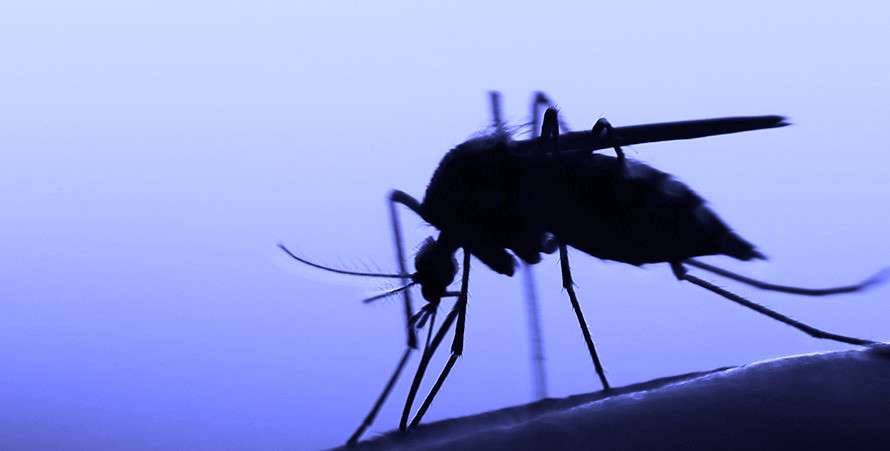
Yale News
A Yale researcher has partnered with the pharmaceutical company Novartis to develop an RNA vaccine to protect against the malaria parasite. The vaccine has the potential to save over one million lives and improve living conditions for hundreds of millions more.
The vaccine patent, originally applied for in 2014 by the researchers, was published by the U.S. Patent & Trademark office this year on Feb. 4. The Yale School of Medicine Chief of Rheumatology, Allergy and Immunology Richard Bucala ’79 and his lab used self-amplifying RNA, or saRNA, technology in order to improve the effectiveness and speed of production of the vaccine by decreasing the amount of genetic material needed in each shot. sRNAs are pieces of genetic material which contain the code for the protein to be targeted by the body’s antibodies after getting the vaccine, but also hold the code for an enzyme which allows the genetic material to replicate itself several times. This means that a much smaller amount of genetic material needs to be injected for the vaccine to provide adequate immunization.
“[The ability to self-replicate] may be critical as an effective malaria vaccine will need to be available to billions,” Thomas Holowka, a resident at the medical school and former doctoral candidate in the Bucala lab, wrote in an email to the News. “And by greatly reducing the amount of genetic material for each vaccine it may be possible to mass produce the vaccine on the scale that is needed.”
According to Bucala, one of the issues with developing a malaria vaccine is that there is no natural sterilizing immunity — which prevents reinfection in the long-term or, ideally, throughout a person’s lifetime. This means that vaccines developed against malaria will usually provide only a short protection period or provide low immunity. The RTS,S vaccine, which was developed about two and a half years ago, grants about 30 percent protection, which decreases very quickly in about two to three years, Bucala said.
Also, different from many other diseases for which there are currently vaccines, malaria is caused by the Plasmodium parasite rather than a virus, which means the organism has a larger number of genes and has developed more mechanisms to trick the body’s immune system.
“The malaria parasite has evolved elaborate strategies to circumvent destruction by the host immune system, complete its life cycle and be passed on by mosquitoes to another person so they can be infected,” Bucala said.
The main target of the saRNA vaccine is the parasite’s PMIF protein, which enables the organism to suppress the host’s immune response and prevents it from producing memory T-cells, which generate immunity. By inhibiting the activity of this protein, the vaccine will allow the body to attack the parasite naturally and to generate longer-term immunity to the disease.
Bucala’s lab developed the new RNA vaccine in partnership with Andrew Geall, former RNA vaccine platform leader at Novartis Pharmaceuticals. According to Geall, he had worked previously with Bucala on malaria research and has been interested in developing a vaccine for some time. However, the team faced challenges because of the novelty of the saRNA technology, which was tested for the first time in humans a year ago.
“The main challenge was getting the work published,” Geall wrote in an email to the News. “This is a new concept and the mode of action for the vaccine is very different to the current approaches. Reviewers required extensive data validation.”
According to Bucala, Geall and Holowka, if the vaccine is approved, it could be revolutionary to the pharmaceutical field. Holowka, who has studied the similar Leishmania parasite, believes that the development of this vaccine could lead to a dramatic increase in availability of vaccines for similar parasites that greatly impact many countries around the world.
According to Geall, the technology behind this vaccine could also significantly boost pharmaceutical companies’ abilities to produce the genetic material and distribute the shots, given the fact that less RNA is required in each dose. This aspect of the vaccine is critical for a disease that infects such a large number of people each year.
“[Malaria is] the second leading cause of infectious disease death in the world last year, about over 400,000 individuals died,” Bucala said. “They’re usually young children under the age of five.”
According to Bucala and Geall, who is now working at a pharmaceutical company Precision NanoSystems, the two are currently discussing a partnership to start research on a saRNA vaccine for COVID-19. The advantage of this type of vaccine against the coronavirus is the much more efficient production process, which would make it easier for pharmaceutical companies to keep up with the rapid viral mutations of SARS-CoV-2.
Bucala believes that with the development of mRNA vaccines such as the ones created by Pfizer/BioNtech and by Moderna, regulatory agencies such as the FDA will be “more welcoming” towards the innovative saRNA technology. This new technology has already helped progress research on the malaria vaccine, and could also represent another pathway for COVID-19 vaccines.
“If this vaccine works effectively in humans it could provide a breakthrough to save hundreds of thousands of lives, particularly in developing nations,” Geall wrote to the News.
According to the World Health Organization, children under the age of five account for over 67 percent of worldwide deaths each year.
Beatriz Horta | beatriz.horta@yale.edu







